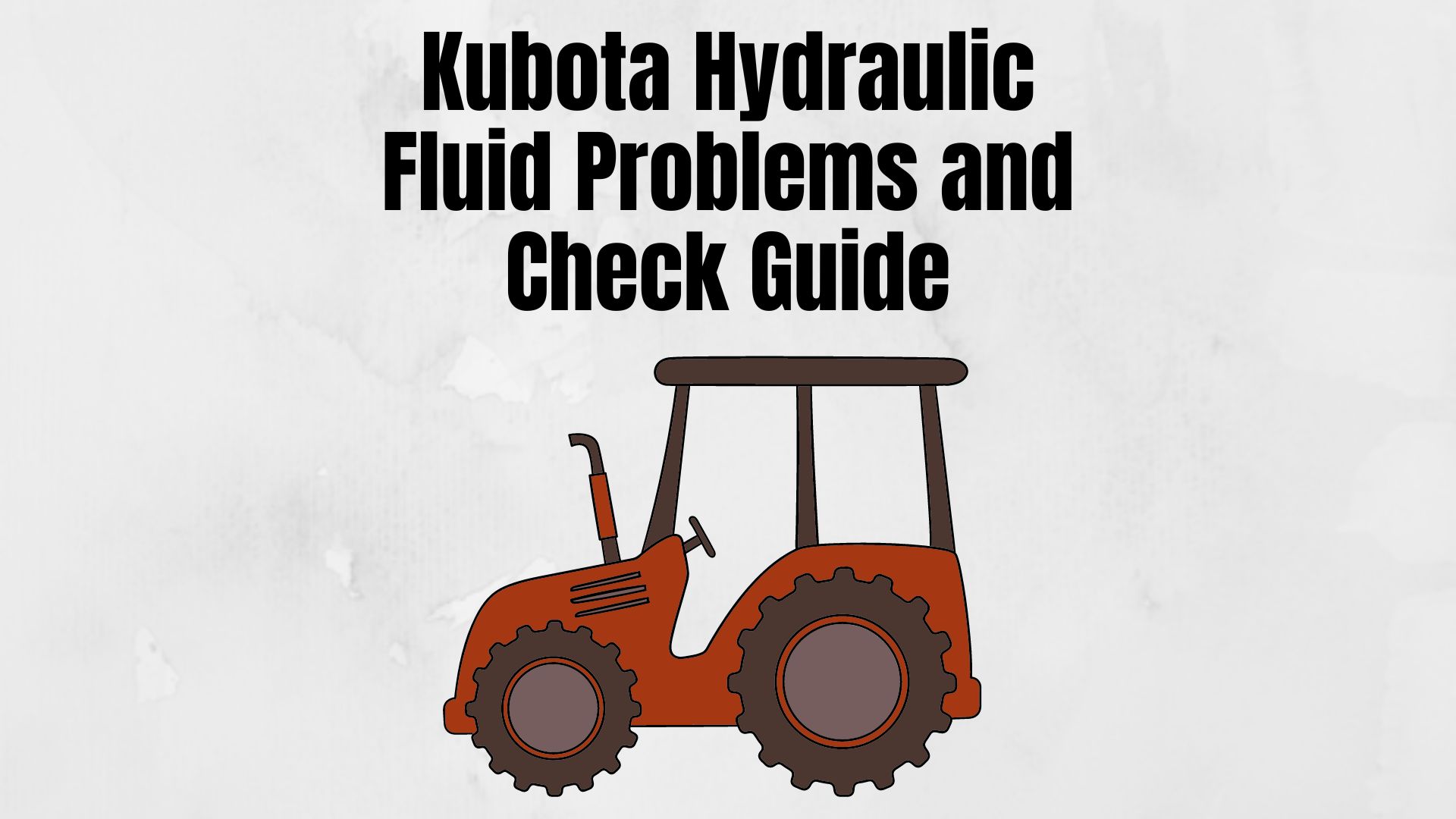
Kubota is a trusted name in agricultural and construction equipment, known for its durable hydraulic systems. Proper maintenance of hydraulic fluid is crucial to keep Kubota machinery performing at its best. This comprehensive guide will help you identify, diagnose, and address common hydraulic fluid problems that Kubota equipment may encounter.
Whether you own a tractor, excavator, or other Kubota machinery, understanding the importance of hydraulic fluid and knowing how to troubleshoot issues will ensure smooth operation and minimize downtime. By the end of this guide, you’ll have the knowledge and confidence to maintain your Kubota hydraulic system and address potential problems.
Importance of Hydraulic Fluid in Kubota Equipment
Hydraulic fluid is the lifeblood of Kubota equipment with hydraulic systems, including tractors, excavators, loaders, and more. It serves several critical functions:
- Transmits power: Hydraulic fluid transfers force from the hydraulic pump to various components, allowing them to perform work, such as lifting, digging, or steering.
- Lubrication: Hydraulic fluid lubricates the moving parts within the hydraulic system, reducing friction and wear.
- Cooling: It helps dissipate heat generated during hydraulic system operation, preventing overheating.
- Seal protection: Hydraulic fluid prevents leaks by keeping seals and gaskets in good condition.
Proper hydraulic fluid maintenance is essential to ensure equipment longevity and performance.

Common Hydraulic Fluid Problems and Symptoms
Problems with hydraulic fluid can manifest in various ways, leading to a range of symptoms:
2.1. Low Fluid Level:
- Symptoms: Reduced hydraulic power, slow or weak equipment operation, or unusual noises from the hydraulic system.
- Causes: Fluid leaks, improper fluid level, or excessive fluid consumption.
- Solution: Inspect for leaks, top up the fluid level to the manufacturer’s recommended level, and repair any leaks.
2.2. Contaminated Fluid:
- Symptoms: Reduced system efficiency, erratic operation, or component damage.
- Causes: Contamination by dirt, water, or foreign particles.
- Solution: Drain and replace the hydraulic fluid, and inspect and clean filters and reservoirs.
2.3. Air in the Hydraulic System:
- Symptoms: Spongy or unresponsive hydraulic controls, erratic equipment movement, or loud noises.
- Causes: Air entering the hydraulic system due to leaks, fluid changes, or improper bleeding.
- Solution: Identify and repair leaks, bleed the system, and ensure proper fluid filling procedures.
2.4. Fluid Overheating:
- Symptoms: Increased operating temperature, reduced system efficiency, or hydraulic component damage.
- Causes: Inadequate cooling, low fluid level, or excessive system demands.
- Solution: Check cooling components, maintain proper fluid level, and monitor hydraulic system demands.
- Kubota Hydraulic Fluid Check and Troubleshooting (800 words):
Now, let’s explore detailed steps to check and troubleshoot common hydraulic fluid problems in Kubota equipment:
3.1. Low Fluid Level Check and Troubleshooting:
- Check the hydraulic fluid reservoir’s sight glass or dipstick to verify the fluid level. Top up as needed with the recommended hydraulic fluid.
- Inspect the hydraulic system and components for visible leaks. Leaks are often the primary cause of low fluid levels. Repair any identified leaks promptly.
- If fluid levels continue to drop significantly, perform a pressure test on the hydraulic system to detect hidden leaks.
- Regularly check for loose or damaged hydraulic hose fittings, and tighten or replace them as necessary.
3.2. Contaminated Fluid Check and Troubleshooting:
- Drain the hydraulic fluid reservoir and replace it with fresh, clean hydraulic fluid following Kubota’s specifications.
- Inspect and clean the hydraulic fluid filters. Depending on the model, your Kubota equipment may have in-line filters or filters within the reservoir.
- Install or replace filters according to Kubota’s maintenance schedule.
- Inspect the hydraulic system for damaged or worn seals, and replace them if necessary.
- Implement proper hydraulic fluid handling practices to prevent future contamination, such as using clean containers and funnels.
3.3. Air in the Hydraulic System Check and Troubleshooting:
- Bleed the hydraulic system to remove trapped air. Follow Kubota’s recommended bleeding procedure for your specific equipment model.
- Carefully inspect hydraulic hoses, connections, and fittings for any signs of leakage that could introduce air into the system.
- Ensure that hydraulic fluid is at the correct level, as low fluid can contribute to air entering the system.
- If air continues to enter the system despite bleeding, inspect and replace damaged hydraulic seals or components that may be drawing in air.
3.4. Fluid Overheating Check and Troubleshooting:
- Monitor the operating temperature of the hydraulic fluid. Use a thermometer or an infrared temperature gun to check the temperature regularly.
- Ensure that the cooling components, such as the radiator or hydraulic oil cooler, are clean and free of debris that could impede heat dissipation.
- Check the hydraulic fluid level and top it up if necessary. Low fluid levels can lead to increased temperatures.
- Avoid prolonged high-demand operations that can overheat the hydraulic system. Allow the system to cool down during extended use.

Preventive Maintenance Tips
To maintain the health of your Kubota hydraulic system and prevent problems, consider the following preventive maintenance tips:
- Regularly inspect hydraulic hoses, connections, and fittings for signs of wear, damage, or leaks. Address any issues promptly.
- Follow Kubota’s recommended hydraulic fluid change intervals and use the specified hydraulic fluid type.
- Keep the hydraulic fluid reservoir and components clean to prevent contamination.
- Inspect and clean hydraulic fluid filters or replace them according to Kubota’s maintenance schedule.
- Bleed the hydraulic system when performing fluid changes or after any component replacements to remove air.
- Monitor hydraulic fluid levels and top up as needed to maintain proper levels.
- Avoid overloading the hydraulic system and operating it within the recommended temperature limits.
Conclusion
Maintaining the hydraulic fluid in your Kubota equipment is essential for ensuring optimal performance and equipment longevity. Following the troubleshooting steps and preventive maintenance tips outlined in this guide, you can effectively diagnose and address common hydraulic fluid problems. Regular inspection, proper fluid handling, and timely repairs will help keep your Kubota equipment’s hydraulic system in

I’m David man behind Lawn Mowerly; I’ve been dealing with lawnmowers and Tractors with my father since I was a kid. I know every make and model and what each one is capable of and love helping people find the perfect lawn mower for their needs.
